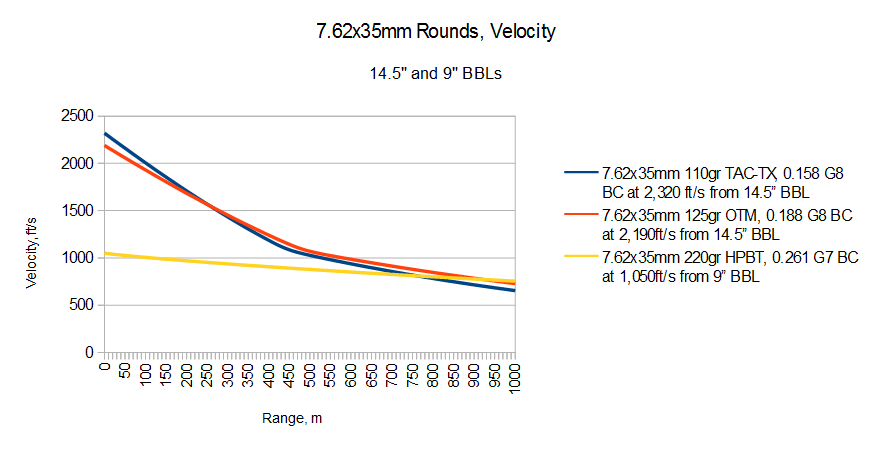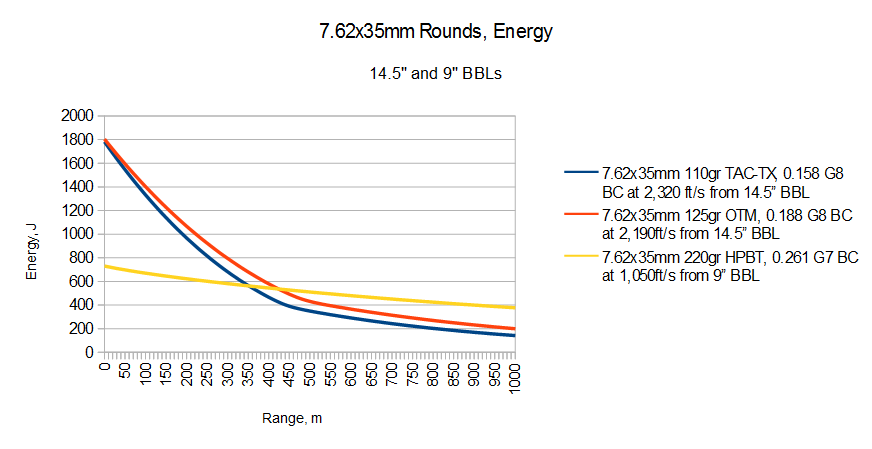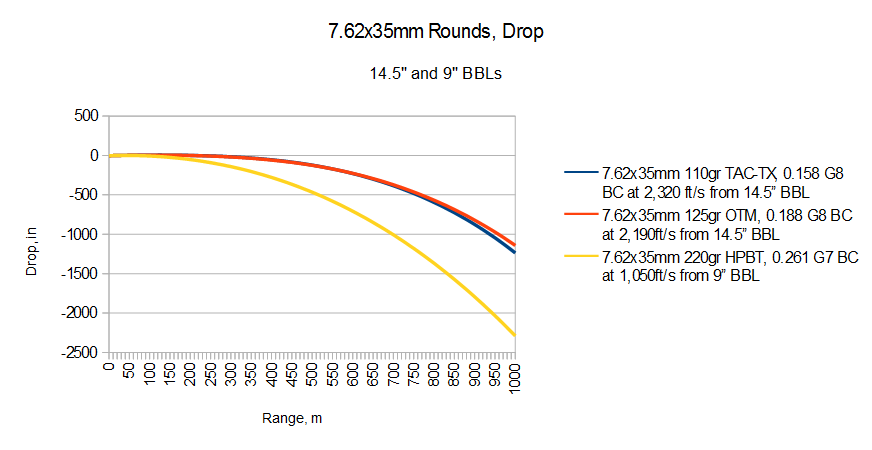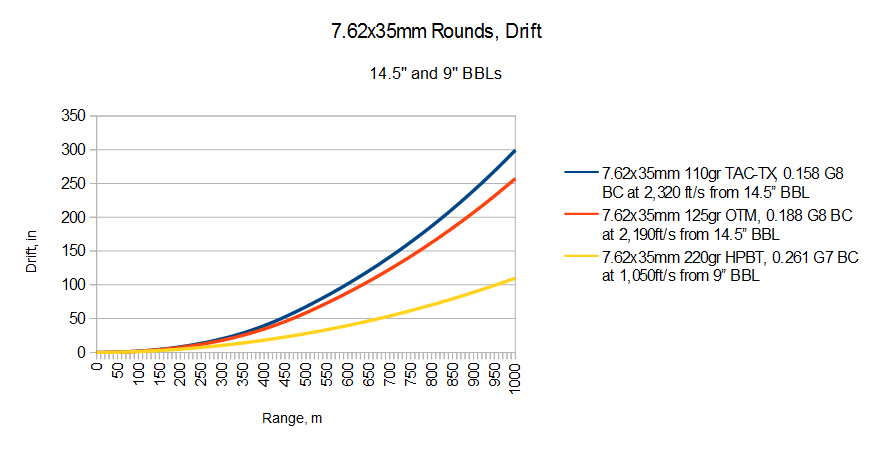Previously, we talked about the Soviet 7.62x39mm caliber, which was paired with the famous Kalashnikov automatic rifle. With its much heavier bullet, larger caliber, and lower velocity, the 7.62x39mm contrasts heavily with the US 5.56mm caliber, and US weapons manufacturers took note. The .300 AAC Blackout is in many ways similar to the 7.62x39mm caliber, being – like the 6.8 SPC – inspired by it, but designed to add new capabilities. The origin of the Blackout lies in the earlier .300 Whisper, a wildcat developed by JD Jones from the .221 Remington Fireball to fire both heavy subsonic projectiles and lighter supersonic rounds with ballistic characteristics similar to the 7.62x39mm, while being highly compatible with existing AR-15 type rifles. Versus the older Whisper, the Blackout is little changed, but its introduction, backed by the force of Advanced Armament Corp, Remington, Barnes, and other companies, made it virtually an overnight success on the US civilian market.
Now, let’s take a look at the ballistics:
You can see how the heavy bullet subsonic load retains velocity and energy very well, and has low wind drift due to its mass, but also has very poor drop characteristics, restricting its usefulness to a short-range, special applications round.
Ammunition for the .300 AAC Blackout is in the middle of the pack for overall weight, with lighter 110 and 115 grain loads weighing about 14 grams (216 grains). However, the heavier special subsonic loads are much heavier, at about 21 grams (324 grains), very similar to the .45 ACP pistol caliber.
Note: All ballistic calculations are done with JBM’s Trajectory calculator, using the ballistic coefficient appropriate to the projectile being modeled, and assuming an AR-15 as a firing platform. Also, keep in mind that there is no single true velocity for a given round; velocity can vary due to a large number of factors, including ambient temperature and chamber dimensions. Instead, I try to use nominal velocity figures that are representative of the capability of the round in question.
 Your Privacy Choices
Your Privacy Choices




